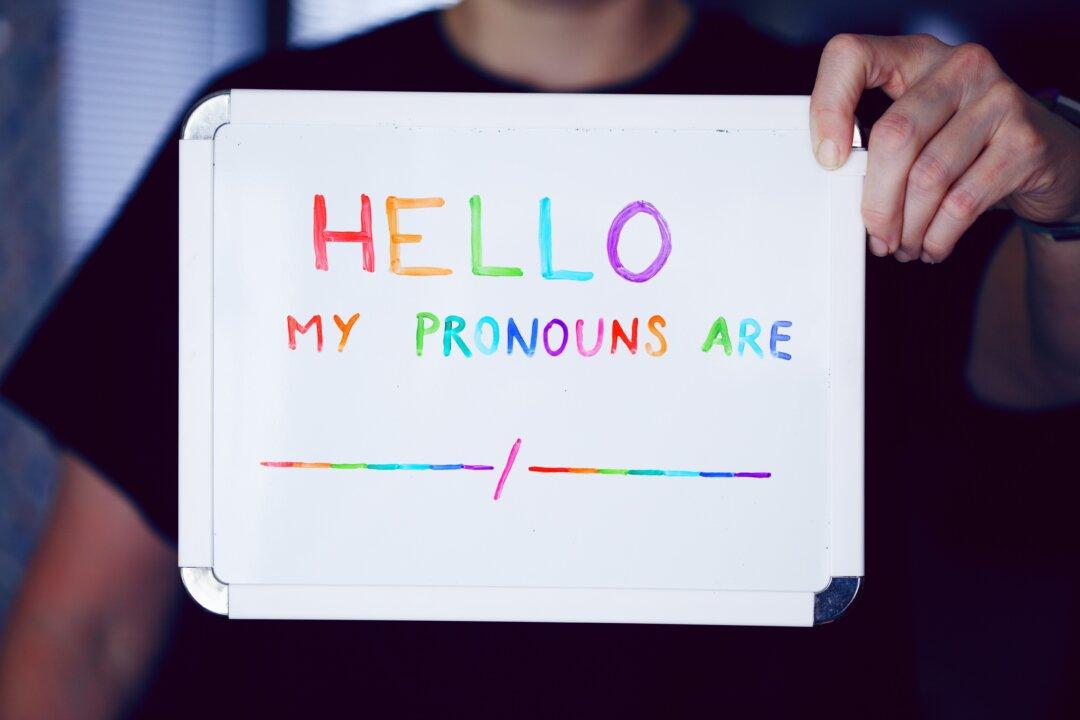On May 5, I attended the California Association of Marriage and Family Therapists (CAMFT) conference in Santa Clara, California. In my third installment about this conference, I’m going to talk about the class titled “Parents in Transition, Clinical Considerations When Treating Parents of Gender Diverse Children,” presented by Linda K. Reeves, LMFT (she/her) WPATH GEI Certified Gender Specialist.
Reeves introduced herself as a “cis-gendered heterosexual woman.”
She said: “I understand that I’m looking through a lens of privilege and limited experience by the fact that I’m not trans or non-binary. I am the very proud mother of a gay son who came out in the seventh grade, and that really was the inspiration to specialize in my master’s curriculum in the LGBT specialization.”
Reeves said we live in a “cis-superior” culture and that got her “very agitated” and motivated her to become a trans activist.
This woman seemed to come from a place of caring and was very proud of her ability to be such a strong “ally.” She taught the class from a place of empathy for parents who are “grieving” the loss of their “cis” child. In fact, as part of her training, she reviewed the stages of grief by Elisabeth Kubler-Ross: denial, anger, bargaining, depression, and acceptance.
Reeves believes that it’s the therapist’s job to encourage a parent to accept their child as trans and not ask any questions. If parents don’t acknowledge their child as transgender, no matter the circumstances, they’re in the denial phase of grief. If parents have questions or believe that their child is masking another mental health issue, it’s transphobic. It isn’t “intentional transphobia” but transphobia nonetheless.
She categorized parents into three types: “transformers,” parents who “have the capacity to accept their child as trans” (this seems to be her ideal); “transphobics,” parents who “view their child as an extension of themselves and aren’t comfortable with a transition”; and “transporters,” parents who “purge themselves of any transphobic thoughts and can be too affirming.” She described the transporters as concerning as well because they aren’t letting the child “lead the bus.”
Throughout the presentation, Reeves used the metaphor “getting ‘em on the bus,” referring to convincing parents that they must blindly affirm their child’s transgender identity (but not too much). She used empty phrases such as “increasing attunement,” “psychoeducation,” and “creating a new narrative” to describe ways to influence those parents to ride that transgender bus.
She also said transphobia isn’t the child’s or the parents’ fault; it’s the system at large.
“It’s not the identities that creates [sic] the problem, it’s the systemic oppression that creates the problem,” Reeves said. (If you find this confusing, you aren’t alone.)
She spoke about soft approaches for much of the presentation; however, she instructed the class to call Child Protective Services if parents don’t affirm their child’s transgender identity.
Reeves also directed the room full of therapists to keep a child’s transgender identity secret from the parents if the child isn’t “out” and to always favor the affirming parent in custody situations.
She reinforced the worldview that if a child says they’re transgender, even as a toddler, they should be believed. Here, she referenced Diane Ehrensaft, a clinical psychologist at the University of California–San Francisco. Ehrensaft believes that when a pre-verbal girl is pulling out her hair barrettes, this is a “gender message.” Ehrensaft said the same for a young boy in a onesie; if he unsnaps it, he’s communicating that he wants to be wearing a dress and therefore wants to be a girl. (Again, if you feel there’s a problem with this, you aren’t the only one.)
There was a brief moment in Reeves’s lecture when she contradicted herself and said there are rare circumstances when a child may be seeking attention with a transgender identity. However, she had no explanation for how a therapist could discern when these cases arise. At the end of the lecture, I asked how one can tell when a child might not be “true trans,” and she floundered trying to answer my question. In the end, she had no answer.
My takeaway from this class is that most therapists have been manipulated in their training to manipulate their clients. They believe that they’re good by teaching parents how to be virtuous by affirming their questioning child’s chosen gender identity.
Most therapists also believe the lies that puberty blockers are 100 percent reversible and that cross-sex hormones are benign. They don’t consider the psychological harms of denying biological truth and allowing a developing child to “lead.” They also don’t recognize how they’re dividing children from loving parents. Plus, they don’t realize that they’re being trained to be soldiers of profit for the medical–industrial complex. Therapists believe that they’re saving children’s lives, without thinking critically.
Most mental health professionals are kind and compassionate. They’re also often naive and misguided. If you feel that a therapist is manipulating you to do something you feel uncomfortable with, such as leading your child onto a dangerous path of hormones and surgeries, trust yourself and run.




